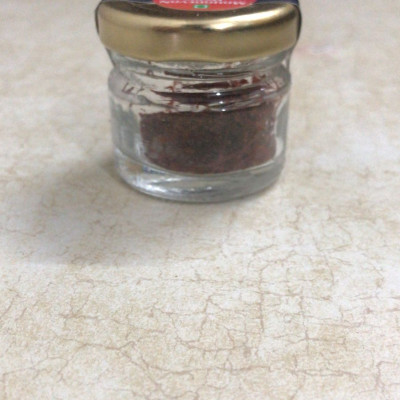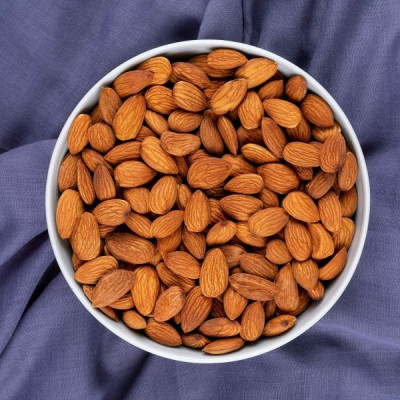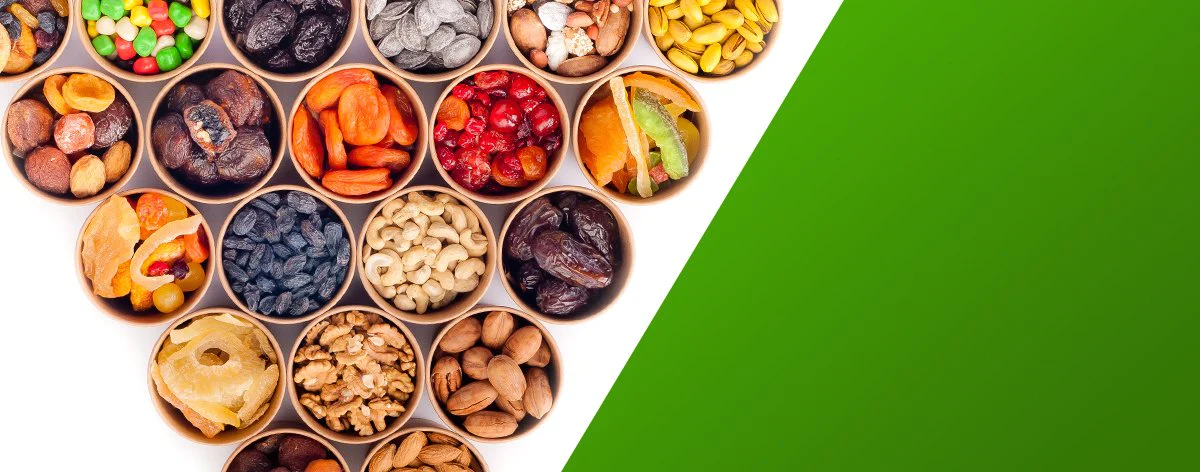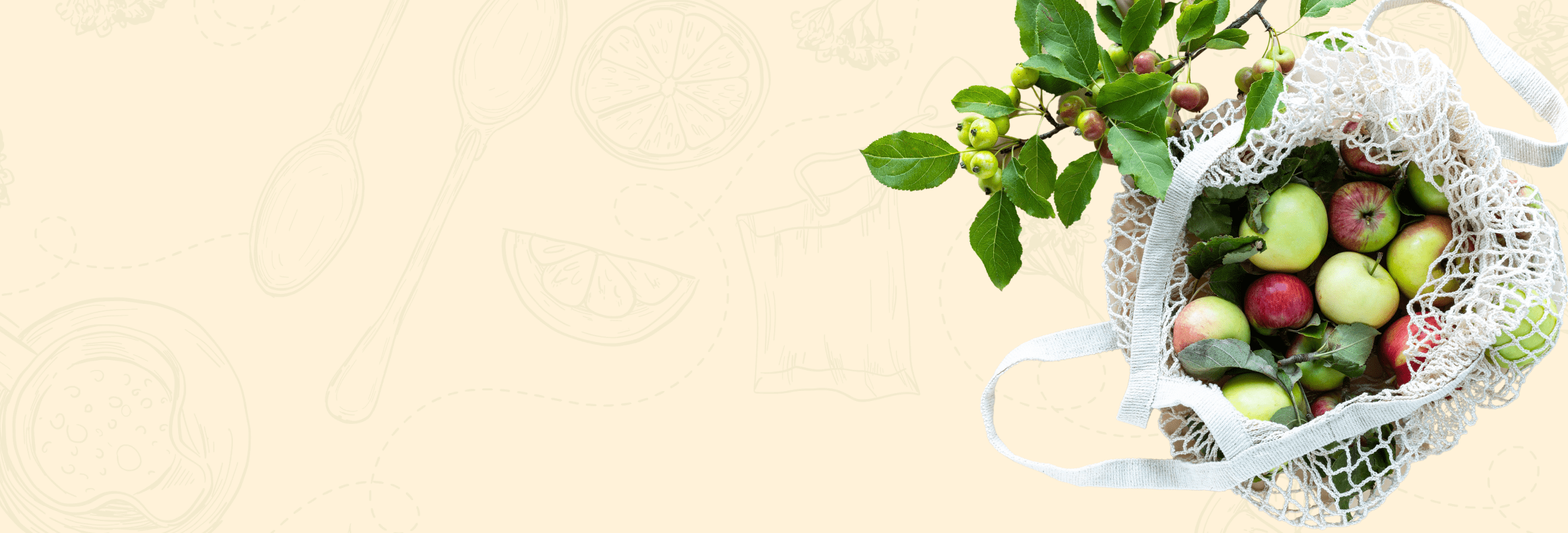SPICES
Discover the Secret Health Benefits of Saffron: The Golden Spice That Boosts Your Well-being!

ABOUT THIS ITEM
Introduction:
Saffron, revered as the "golden spice," has captivated cultures worldwide for countless centuries. Its vibrant crimson threads, delicate fragrance, and exquisite taste have made it not only a prized ingredient in culinary creations but also a source of medicinal benefits. Derived from the flower of Crocus sativus, saffron holds a special place in human history, offering a myriad of uses and an enchanting allure. In this article, we explore the fascinating journey of saffron, its cultivation, and the diverse ways it has left an indelible mark on various aspects of human life.
HEALTH BENEFITS
- A Natural Antioxidant Powerhouse: Saffron possesses an array of potent antioxidants such as crocin, crocetin, and safranal. These compounds help combat oxidative stress, neutralize harmful free radicals, and protect cells from damage. By incorporating saffron into your diet, you can potentially promote overall well-being and support a healthy immune system.
- Mood Enhancement and Emotional Well-being: Saffron has long been associated with mood enhancement and emotional well-being. Research suggests that saffron may help alleviate symptoms of mild to moderate depression, promoting a more positive outlook. It is believed to enhance the production of serotonin, a neurotransmitter that plays a crucial role in regulating mood.
- Cognitive Support and Memory Enhancement: The active compounds present in saffron have shown promise in supporting cognitive function and memory enhancement. Studies indicate that saffron may help improve memory, attention, and mental clarity. It is also being explored for its potential benefits in age-related cognitive decline and neurodegenerative conditions.
- Anti-Inflammatory and Pain Relief Properties: Saffron contains natural compounds that exhibit anti-inflammatory properties. These properties make it a potential aid in managing inflammatory conditions like arthritis. Additionally, saffron may help alleviate pain by inhibiting pain pathways in the body, making it a natural alternative to traditional pain relief methods.
- Potential Cancer-Fighting Abilities: Emerging studies suggest that saffron's bioactive components may possess anti-cancer properties. These compounds have demonstrated the ability to inhibit the growth of cancer cells and induce apoptosis (programmed cell death). While more research is needed, saffron holds promise as a complementary approach to cancer prevention and treatment.
Nutritional Profile:
- Rich in Antioxidants: Saffron is a powerhouse of antioxidants, which help protect the body against oxidative stress and cellular damage. These antioxidants, including crocin, crocetin, and safranal, combat free radicals and support overall well-being. The presence of these potent antioxidants in saffron contributes to its reputation as a valuable spice for promoting health.
- Vitamins and Minerals: Saffron contains several essential vitamins and minerals that are vital for maintaining a healthy body. It is a good source of vitamin C, which supports immune function and acts as an antioxidant. Saffron also provides significant amounts of vitamins A, B6, and K, as well as minerals like manganese, potassium, and copper, which play essential roles in various bodily functions.
- Dietary Fiber: Saffron contains dietary fiber, albeit in small amounts. Fiber is crucial for digestive health, promoting regular bowel movements and supporting a healthy gut. While saffron may not be a significant source of fiber on its own, every bit adds to the overall dietary fiber intake when combined with other fiber-rich foods.
- Bioactive Compounds: Saffron contains unique bioactive compounds that contribute to its potential health benefits. These compounds, such as crocin and crocetin, possess antioxidant, anti-inflammatory, and potential anticancer properties. The presence of these bioactive compounds further enhances saffron's nutritional value and its role as a natural remedy.
- Calorie and Fat Content: Saffron is low in calories and fat, making it a suitable addition to a balanced diet. With its vibrant color and intense flavor, only a small quantity of saffron is typically needed to enhance dishes, keeping its calorie and fat contribution minimal.
Wide range of culinary ideas for using saffron
- Fragrant Saffron Rice: Elevate a simple bowl of rice by infusing it with the enticing aroma and vibrant color of saffron. Soak a few strands of saffron in warm water or milk, then mix it into the cooked rice for a visually stunning and fragrant side dish. This saffron-infused rice pairs perfectly with a variety of main courses, adding an element of elegance to your meal.
- Saffron-Infused Creamy Soups: Add a touch of luxury to creamy soups by incorporating saffron. Whether it's a velvety butternut squash soup, a creamy seafood chowder, or a comforting tomato bisque, infusing saffron into the broth elevates the flavors and imparts a subtle complexity. The golden threads of saffron not only enhance the visual appeal but also contribute a delicate and distinctive taste to the soup.
- Saffron-Infused Sauces and Marinades: Introduce saffron to your sauces and marinades to create a symphony of flavors. From savory tomato-based sauces to creamy white wine reductions, saffron adds depth, complexity, and a beautiful golden hue. The aromatic notes of saffron can complement a variety of dishes, such as grilled meats, roasted vegetables, or even as a drizzle over pasta or seafood.
- Saffron-Infused Desserts: Saffron can bring a touch of luxury to your sweet treats as well. Infuse saffron into milk or cream when preparing custards, puddings, or ice creams to create a unique and indulgent dessert experience. The delicate floral notes of saffron pair beautifully with flavors like vanilla, cardamom, or rosewater, adding a captivating twist to classic desserts.
- Saffron-Infused Beverages: Experiment with saffron-infused beverages to create refreshing and aromatic concoctions. Add a few strands of saffron to warm milk or tea to enjoy a soothing saffron-infused beverage. You can also incorporate saffron into homemade syrups or infuse it into cocktails, creating a captivating fusion of flavors for your next gathering.
Incorporating Saffron Into Breakfasts, salads, main courses, desserts, and beverages.
- Breakfast: Start your day with a touch of luxury by infusing saffron into your breakfast favorites. Consider these ideas:
- Saffron Pancakes: Add a pinch of saffron threads to your pancake batter for a delightful twist on a classic breakfast staple. Serve them with a drizzle of honey or a dollop of saffron-infused yogurt.
- Saffron Oatmeal: Stir in a few strands of saffron while cooking your oatmeal to infuse it with a subtle floral aroma and a beautiful golden hue. Top it with dried fruits, nuts, and a sprinkle of cinnamon for a wholesome and indulgent breakfast.
- Salads: Bring a touch of elegance to your salads with the addition of saffron. Try these creative ideas:
- Saffron Vinaigrette: Whisk saffron-infused olive oil, lemon juice, honey, and Dijon mustard together to create a luscious dressing for your salads. Drizzle it over mixed greens, roasted vegetables, or even fruit salads for a burst of flavor.
- Saffron Couscous Salad: Prepare a refreshing salad by mixing cooked couscous with saffron, diced cucumbers, cherry tomatoes, chopped herbs, and a squeeze of lemon juice. This vibrant salad works well as a side dish or a light lunch option.
- Main Courses: Discover the versatility of saffron in main courses, where it can add depth and complexity to a variety of dishes:
- Saffron-infused Risotto: Elevate a classic risotto by incorporating saffron into the cooking process. The result is a creamy and aromatic dish that pairs well with seafood, roasted vegetables, or grilled chicken.
- Saffron-infused Tomato Sauce: Enhance your tomato-based pasta sauces by adding a pinch of saffron. The saffron complements the acidity of the tomatoes, creating a rich and flavorful sauce.
- Desserts: Indulge your sweet tooth with saffron-infused desserts that offer a delightful combination of flavors:
- Saffron Rice Pudding: Prepare a traditional rice pudding infused with saffron threads, cardamom, and a hint of rosewater. This fragrant and creamy dessert is a true delight.
- Saffron-infused Cakes and Pastries: Add a touch of elegance to your baked goods by incorporating saffron into cakes, cookies, or pastries. Its distinct flavor and color will elevate your sweet treats to a whole new level.
- Beverages: Unleash the aromatic qualities of saffron in refreshing and captivating beverages:
- Saffron-infused Tea: Steep a few strands of saffron in hot water or milk and enjoy a soothing cup of saffron-infused tea. Add a touch of honey for sweetness, if desired.
- Saffron-infused Cocktails: Experiment with saffron-infused syrups or infuse saffron into your favorite cocktails for a unique and sophisticated twist. The delicate flavor of saffron can complement a variety of spirits and mixers.
Tipson adjusting flavors and textures when cooking or baking with saffron
- Start with Quality Saffron: Using high-quality saffron is crucial for achieving the desired flavors and colors. Look for saffron threads that are deep red with a strong aroma. Avoid saffron powders or products that appear dull or contain fillers. Authentic saffron will impart a distinct and enchanting flavor to your dishes.
- Soak Saffron Properly: To release the full potential of saffron, it is important to soak it before use. Place a few strands of saffron in a small bowl and add a tablespoon of warm liquid, such as water, milk, or broth. Let it steep for at least 10 to 15 minutes, allowing the saffron to infuse the liquid with its color, aroma, and flavor. Use the saffron-infused liquid in your recipes to ensure the even distribution of its essence.
- Balance the Flavors: Saffron possesses a delicate and unique flavor profile that can be easily overwhelmed by other ingredients. To strike the perfect balance, consider the following tips:
- Use saffron sparingly: A little saffron goes a long way. Start with a small amount and gradually increase if needed.
- Complement with complementary flavors: Saffron pairs well with ingredients like citrus, cardamom, cinnamon, vanilla, and nuts. Experiment with these flavor combinations to enhance the saffron's natural characteristics.
- Add acidity: Adding a touch of acidity, such as lemon juice or vinegar, can help enhance and balance the flavors when using saffron in savory dishes.
- Enhance the Textures: Saffron can also contribute to the texture of your dishes, providing depth and richness. Consider the following tips to maximize the textural experience:
- Infuse liquids: Apart from soaking saffron in liquid, you can also infuse its flavor by adding it to warm milk, cream, or broth, which can then be used in recipes like sauces, soups, or custards.
- Incorporate saffron in sauces and creams: Saffron can add a velvety smoothness to sauces, creams, and custards. Add it towards the end of cooking or infuse it in warm liquids before incorporating it into your recipes.
- Use saffron in doughs and batters: Saffron can lend a soft and tender texture to bread doughs, cake batters, and pastries. Incorporate it into the recipe during the mixing or kneading process to ensure even distribution.
Pairings and Combinations of Saffron
- Citrus Fruits: The vibrant and tangy flavors of citrus fruits beautifully complement saffron's delicate taste. Consider these pairings:
- Saffron-Infused Lemonade: Add a few strands of saffron to freshly squeezed lemon juice for a refreshing and aromatic twist on classic lemonade.
- Orange and Saffron Salad: Combine segments of juicy oranges with saffron-infused honey, a sprinkle of crushed pistachios, and a touch of fresh mint for a vibrant and delightful salad.
- Cardamom: Cardamom's warm and slightly spicy notes harmonize perfectly with saffron. Try these enticing combinations:
- Saffron and Cardamom Rice Pudding: Infuse your rice pudding with saffron and ground cardamom for a luxurious and aromatic dessert that delights the senses.
- Saffron and Cardamom Tea: Steep a pinch of saffron and a few crushed cardamom pods in hot water to create a fragrant and comforting tea.
- Nuts: The earthy and nutty flavors of various nuts provide a lovely contrast to saffron's delicate sweetness. Experiment with these pairings:
- Saffron and Pistachio Ice Cream: Infuse your homemade pistachio ice cream with saffron strands for a delightful combination of creamy texture and floral flavor.
- Saffron and Almond Biscotti: Add a pinch of saffron to your favorite almond biscotti recipe for a unique and aromatic twist on this classic treat.
- Seafood: Saffron and seafood have a long-standing culinary partnership, as their flavors intertwine seamlessly. Explore these delectable combinations:
- Saffron-Infused Seafood Paella: Create a flavorful paella by combining saffron-infused rice with an array of fresh seafood like shrimp, mussels, and fish for a stunning and aromatic one-pot meal.
- Saffron and Grilled Scallops: Marinate scallops in saffron-infused olive oil, then lightly grill them to perfection, allowing the delicate sweetness of the scallops to harmonize with the saffron's distinctive flavor.
- Honey: The natural sweetness of honey beautifully complements the delicate flavor of saffron. Try these pairings:
- Saffron and Honey Glazed Chicken: Combine saffron-infused honey with a touch of Dijon mustard, lemon juice, and spices to create a flavorful glaze for roasted or grilled chicken.
- Saffron and Honey Yogurt Parfait: Layer saffron-infused honey, yogurt, and your favorite fruits for a heavenly and nutritious breakfast or dessert option.
Examples of ingredients that work well with saffron, such as nuts, other dried fruits, cheeses, and herbs.
- Nuts: Nuts add an irresistible crunch and richness to saffron-infused dishes. Consider these examples:
- Almonds: Whether toasted, slivered, or ground, almonds bring a subtle nutty flavor that complements saffron in dishes like pilafs, rice dishes, and desserts.
- Pistachios: The vibrant green color and delicate flavor of pistachios provide a delightful contrast to saffron in desserts, ice creams, and savory dishes such as rice and couscous.
- Other Dried Fruits: Just like saffron, dried fruits possess a concentrated sweetness that can harmonize beautifully. Try these combinations:
- Dried Apricots: Their tartness and subtle sweetness pair wonderfully with saffron in Moroccan-inspired tagines, rice dishes, and couscous salads.
- Raisins: These sweet and chewy dried fruits add a touch of sweetness to saffron-infused rice, biryanis, and pilafs, creating a delightful contrast of flavors.
- Cheeses: Cheese can provide a creamy and savory component to saffron-infused dishes, enriching their overall taste. Explore these combinations:
- Parmesan: The nutty and salty flavors of Parmesan cheese complement saffron in risotto, pasta dishes, and creamy sauces, adding depth and richness.
- Feta: The tangy and crumbly texture of feta cheese pairs wonderfully with saffron in salads, roasted vegetable dishes, and Mediterranean-inspired recipes.
- Herbs: Herbs add freshness and complexity to saffron-infused dishes, elevating their flavor profiles. Consider these examples:
- Fresh Basil: The aromatic and slightly peppery notes of basil enhance saffron in pasta sauces, soups, and tomato-based dishes, creating a vibrant and herbaceous combination.
- Fresh Thyme: The earthy and floral qualities of thyme add depth to saffron-infused stews, roasted meats, and vegetable medleys, creating a delightful aromatic balance.
Buying and Storing Tips for Saffron
- Purchase from Reputable Sources: When buying saffron, it is essential to choose a reputable source that guarantees the authenticity and quality of the spice. Look for trusted suppliers or specialty stores that have a track record of providing genuine saffron. Opt for brands that undergo rigorous testing and certification processes to ensure purity and origin.
- Consider the Saffron Grade: Saffron comes in different grades, each with varying levels of quality. The highest grade is known as "Coupe" or "Superior," which consists of pure saffron threads without any yellow or white parts. Lower grades, such as "Pushal" or "Bunch," may contain some yellow or white threads mixed with the red ones. Choose a grade that suits your needs and budget, but keep in mind that higher-grade saffron generally offers a more intense flavor and vibrant color.
- Examine the Saffron Threads: Inspect the saffron threads before making a purchase. Genuine saffron should have vibrant, deep red color throughout the threads. Avoid saffron with pale or yellowish sections, as they may indicate lower quality or adulteration. Additionally, ensure that the threads are whole and unbroken, as fragmented or powdered saffron may lose its potency and flavor.
- Consider the Packaging: Proper packaging plays a vital role in maintaining saffron's quality. Choose saffron that comes in airtight containers or packaging that protects it from light, moisture, and air exposure. Dark glass containers are preferred, as they help preserve the delicate flavor and aroma of saffron.
- Store in a Cool, Dark Place: To preserve the freshness and flavor of saffron, store it in a cool, dark place away from direct sunlight, heat, and humidity. A pantry or a cupboard away from the stove or any heat source is ideal. Avoid storing saffron in the refrigerator, as the moisture can affect its quality. Additionally, ensure the container is tightly sealed after each use to prevent air and moisture from entering.
- Use Within a Reasonable Timeframe: Saffron is best consumed within a reasonable timeframe to ensure optimum flavor and potency. While it does not spoil, saffron's flavor and aroma can diminish over time. To enjoy its full potential, it is recommended to use saffron within one to two years of purchase. Mark the purchase date on the container to keep track of its freshness.
Buying and Storing Tips for Saffron
- Choose Reliable Sources: When purchasing saffron, it is crucial to select reputable and trustworthy sources. Look for established suppliers who specialize in saffron and have a reputation for providing authentic and high-quality products. Consider brands that source their saffron directly from reputable regions known for saffron cultivation, such as Iran, Spain, or Kashmir.
- Look for Quality Indicators: Examine the saffron threads before making a purchase. High-quality saffron should consist of deep red stigmas (threads) with a slight orange-red hue at the tips. Avoid saffron that contains excessive yellow or white parts, as they indicate lower quality or adulteration. Opt for saffron threads that are whole and unbroken, as they retain their potency and flavor better than fragmented or powdered saffron.
- Consider Packaging: Choose saffron that is packaged in airtight containers or pouches designed to protect it from light, air, and moisture. Dark-colored glass containers or foil pouches are preferred, as they shield saffron from harmful UV light and help preserve its delicate flavor and aroma. Ensure that the packaging is sealed properly to prevent air exposure.
- Store in Optimal Conditions: To maintain saffron's quality, store it in a cool, dry place away from direct sunlight, heat, and humidity. A pantry or a kitchen cabinet is suitable for storage. Avoid storing saffron near the stove or any heat source, as exposure to heat can degrade its flavor and potency. Ensure that the storage container is airtight and well-sealed to prevent moisture absorption and maintain the saffron's freshness.
- Use Within a Reasonable Timeframe: Saffron does not spoil, but its flavor and potency can diminish over time. It is recommended to use saffron within one to two years of purchase to enjoy its optimal quality. Keep track of the purchase date by labeling the container, allowing you to monitor its freshness. If the saffron's aroma and color start to fade significantly, consider replacing it with a fresh batch to ensure the best culinary experience.
- Employ Proper Handling: When using saffron, handle it with care to preserve its delicate qualities. Avoid exposing saffron to excessive air and moisture by opening the container only when necessary. Measure the desired amount of saffron and promptly reseal the container to minimize its exposure to the environment. Grinding or crushing saffron just before use helps to release its flavor and aroma.
Seasonal and Festive Celebrations of Saffron
- Winter Celebrations: During the winter season, saffron infuses warmth and richness into comforting dishes that bring people together. Consider these saffron-infused delights:
- Saffron-Infused Mulled Wine: Add a few strands of saffron to a pot of simmering mulled wine, enhancing its aromatic profile and providing a delightful burst of flavor.
- Saffron Rice Pilaf with Dried Fruits and Nuts: Create a festive side dish by combining saffron-infused basmati rice with dried cranberries, apricots, and toasted almonds, yielding a colorful and aromatic delight.
- Spring Festivities: As nature awakens during spring, saffron brings its vibrant hues and delicate taste to the table. Embrace the spirit of renewal with these saffron-inspired dishes:
- Saffron-Infused Risotto with Spring Vegetables: Elevate a classic risotto by infusing the broth with saffron, then incorporating seasonal vegetables like asparagus, peas, and artichokes for a vibrant and fresh celebration of flavors.
- Saffron-Flavored Desserts: Indulge in saffron-infused sweets like saffron-infused cakes, cookies, or ice creams, adding a touch of elegance and exoticism to your spring dessert table.
- Summer Festivities: Summer festivities call for refreshing and vibrant dishes that highlight saffron's versatility. Try these ideas:
- Saffron-Infused Lemonade: Infuse your lemonade with a hint of saffron, creating a refreshing and exotic twist on a classic summer beverage.
- Saffron-Marinated Grilled Seafood: Enhance the flavors of grilled seafood, such as shrimp, scallops, or fish, by marinating them in a saffron-infused marinade, creating a tantalizing dish that captures the essence of summer.
- Autumn Harvest Gatherings: As autumn arrives, saffron complements the rich flavors of harvest ingredients, creating a symphony of tastes and aromas. Consider these seasonal dishes:
- Saffron-Spiced Butternut Squash Soup: Elevate a classic butternut squash soup by adding saffron threads, enhancing its depth and complexity, and creating a luxurious autumnal starter.
- Saffron-Infused Apple Tart: Infuse saffron into the apple filling of a tart or pie, adding a unique twist to a traditional autumn dessert.
Fun Facts and Trivia About Saffron: Unveiling the Golden Spice's Secrets
- The World's Most Expensive Spice: Saffron holds the prestigious title of being the most expensive spice in the world. This is primarily due to the labor-intensive process of harvesting the delicate stigmas by hand, as well as the large quantity of flowers required to produce a small amount of saffron.
- A Flower's Hidden Treasure: Saffron comes from the vibrant purple crocus flower, scientifically known as Crocus sativus. Each flower contains three vivid red stigmas, which are carefully handpicked and dried to create saffron threads.
- Golden Color Magic: Saffron is famous for its rich golden color, which it imparts to dishes. It contains a natural pigment called crocin, which gives saffron its characteristic hue. Just a small pinch of saffron can transform an entire dish, adding a captivating golden glow.
- Ancient Origins: Saffron has a long and storied history dating back over 3,500 years. It is believed to have originated in the region of modern-day Iran, where it has been cultivated for centuries. Saffron was highly valued in ancient civilizations such as Egypt, Greece, and Rome, and was used for various purposes, including culinary, medicinal, and religious ceremonies.
- Medicinal Marvel: Saffron has been prized for its medicinal properties since ancient times. It contains compounds such as crocin, safranal, and picrocrocin, which have antioxidant, anti-inflammatory, and mood-enhancing effects. Saffron is believed to have numerous health benefits, ranging from improving mood and cognitive function to promoting heart health and reducing symptoms of depression.
- Culinary Versatility: Saffron is a versatile spice that can be used in a wide variety of dishes. It is a staple in traditional cuisines around the world, from Spanish paella to Indian biryani, Italian risotto, and Persian rice dishes. Saffron's unique flavor profile adds depth and complexity to both savory and sweet dishes, making it a prized ingredient in culinary creations.
- Saffron Symbolism: Saffron holds special significance in many cultures. It is often associated with wealth, prosperity, and luxury. In ancient times, saffron was used as a dye for royal garments, symbolizing status and power. Even today, saffron remains a symbol of prestige and is used in special occasions and festive celebrations.
- A Delicate Harvest: Harvesting saffron is a meticulous process that requires skilled hands. The flowers bloom for only a brief period each year, usually in autumn, and must be carefully plucked early in the morning to preserve their freshness. It takes approximately 75,000 saffron flowers to produce just one pound of saffron threads.
- Saffron in Art and Culture: Saffron has made its mark beyond the culinary world. It has been used as a natural dye in textiles, creating vibrant golden hues in fabrics. Saffron also finds its place in traditional art, literature, and music, often symbolizing beauty, passion, and transformation.
- Saffron in Popular Culture: Saffron's allure has captured the imagination of artists, writers, and filmmakers throughout history. It has been referenced in famous literary works, such as Shakespeare's plays and the tales of the Arabian Nights. Saffron's distinct aroma and flavor have also inspired the creation of perfumes, candles, and gourmet products.
Exploring International Varieties of Saffron
- Persian Saffron (Iran): Persian saffron, also known as Iranian saffron, is renowned for its exceptional quality and deep-red threads. It is often considered the finest saffron in the world. Persian saffron has a robust flavor, with floral and honey-like notes. It is prized for its intense aroma and vibrant color, making it a staple in Persian cuisine, particularly in dishes like rice pilaf, stews, and sweets.
- Spanish Saffron: Spain is one of the largest producers of saffron in the world. Spanish saffron is known for its vivid red threads with a slightly milder flavor compared to Persian saffron. It has a floral and earthy taste, with hints of honey and hay. Spanish saffron is highly valued in traditional Spanish dishes like paella, soups, and desserts, where it infuses a distinctive flavor and imparts a beautiful golden hue.
- Kashmiri Saffron (India): Kashmiri saffron, grown in the picturesque valleys of Kashmir, is celebrated for its unique flavor profile and deep crimson threads. It is characterized by a strong aroma, a slightly sweet and floral taste, and a bold color. Kashmiri saffron is treasured in Indian cuisine, elevating dishes such as biryani, kheer (rice pudding), and savory curries with its distinct essence and vibrant hue.
- Greek Saffron: Greece has a rich saffron heritage dating back to ancient times. Greek saffron, often referred to as Krokos Kozanis, is recognized for its bright red threads and complex flavor. It has a robust and bittersweet taste, with hints of honey and floral undertones. Greek saffron is used in traditional Greek dishes like loukoumades (honey puffs), rice puddings, and savory dishes like fish soup and risotto.
- Moroccan Saffron: Moroccan saffron, also known as Taliouine saffron, is highly prized for its intense aroma and distinct flavor. It has a deep red color and a slightly sweet, earthy taste with hints of floral and herbal notes. Moroccan saffron is a key ingredient in Moroccan cuisine, particularly in dishes like tagines, couscous, and sweet pastries, where it imparts a rich flavor and lends a beautiful golden hue.
- Italian Saffron: Italy boasts its own saffron production, mainly centered in the Abruzzo and Sardinia regions. Italian saffron is characterized by its dark red threads and a delicate yet distinct flavor. It has a floral and slightly bitter taste with hints of honey. Italian saffron is used in various Italian dishes, including risotto, pasta sauces, bread, and desserts, adding a touch of luxury and flavor complexity.
FAQS:
Q: What are the export requirements for saffron products?
A: Export requirements for saffron products vary depending on the country of origin and the destination country. Generally, exporters need to comply with regulations related to quality standards, labeling, documentation, and customs procedures. It's important to research the specific requirements of the target market and work with relevant authorities or trade organizations to ensure compliance.
Q: How can I ship saffron products internationally?
A: Shipping saffron products internationally involves careful consideration of packaging, documentation, and transportation options. Saffron should be packed in airtight, light-resistant containers to preserve its quality. Proper labeling, including product information, country of origin, and any required certifications, is essential. Choose reliable shipping providers experienced in handling delicate and perishable goods. Air freight is often preferred for saffron due to its speed and controlled environment.
Q: Are there any restrictions or regulations on exporting saffron?
A: Exporting saffron may be subject to specific restrictions or regulations depending on the country of origin and destination. These may include phytosanitary requirements, documentation for traceability, and compliance with international trade agreements. It's crucial to stay informed about any applicable export regulations and work closely with regulatory authorities or trade experts to ensure compliance.
Q: What are the packaging standards for saffron exports?
A: Packaging standards for saffron exports focus on maintaining the quality, aroma, and flavor of the product. Saffron is typically packed in airtight, light-resistant containers, such as glass jars or metal tins, to protect it from moisture and sunlight. Proper labeling with essential information is necessary for traceability and compliance with import regulations. Good packaging practices should be followed to avoid contamination or damage during transit.
Q: How can I tap into the international market for saffron products?
A: To tap into the international market for saffron products, thorough market research is crucial. Identify potential target markets, understand consumer preferences, and evaluate competition. Establish relationships with reliable buyers, distributors, or importers who have experience in the saffron industry. Consider participating in international trade shows or leveraging online platforms to showcase your saffron products. Adhere to quality standards, certifications, and pricing strategies that align with the target market's expectations.
Q: Are there any certifications or quality standards required for saffron exports?
A: Certifications and quality standards for saffron exports may vary depending on the target market. Common certifications include ISO 3632, which ensures the quality classification of saffron based on color, flavor, and aroma. Additionally, organic certification, Fairtrade certification, or specific geographical indications may be sought after by certain markets. Research the certifications that are relevant to your target market and consider obtaining them to enhance the marketability of your saffron products.
Q: How can I ensure the freshness and quality of saffron during export?
A: To ensure the freshness and quality of saffron during export, it's important to source saffron from reputable suppliers and ensure proper handling, storage, and packaging. Maintain appropriate temperature and humidity conditions to preserve saffron's delicate flavor and aroma. Conduct regular quality checks and follow good manufacturing practices to ensure the product meets international standards. Collaborate with logistics providers who specialize in handling sensitive and perishable goods to maintain the product's integrity throughout the supply chain.
Q: What is the shelf life of saffron?
A: Saffron has a relatively long shelf life when stored properly. Generally, high-quality saffron can retain its flavor and aroma for up to two years when stored in an airtight container in a cool, dark place. However, for the best quality, it is recommended to use saffron within one year of purchase.
Q: What is the recommended serving size for saffron?
A: Saffron is a potent spice, and a little goes a long way. The recommended serving size of saffron is typically a small pinch or a few threads (around 10-15 threads) for a dish serving four to six people. It's important to note that the intensity of saffron's flavor and color can vary, so it's best to start with a small amount and adjust according to personal preference.
Q: Are there any potential allergens in saffron?
A: Saffron is generally not known to be a common allergen. However, as with any food product, some individuals may have sensitivities or allergic reactions. It is recommended to exercise caution if you have known allergies to other spices or plant products. If you experience any adverse reactions after consuming saffron, it's best to consult with a healthcare professional.
Q: Can saffron be used during pregnancy or breastfeeding?
A: Saffron is considered safe for consumption during pregnancy and breastfeeding when used in moderate culinary amounts. However, it's advisable to consult with a healthcare professional before incorporating saffron into your diet during these stages, as individual circumstances may vary.
Q: Can saffron be used in recipes for individuals with diabetes?
A: Saffron can be used in recipes for individuals with diabetes as it is low in calories and carbohydrates. However, it's important to consider the overall composition of the dish and its impact on blood sugar levels. It's advisable to work with a registered dietitian or healthcare professional to determine appropriate serving sizes and incorporate saffron into a well-balanced meal plan.
Q: Can saffron be substituted with other spices?
A: Saffron has a unique flavor and aroma that is difficult to replicate with other spices. However, if saffron is not available or if cost is a concern, you can experiment with substitutions like turmeric, safflower, or a combination of ground cinnamon and nutmeg. Keep in mind that these substitutions may not provide the exact flavor and color profile of saffron.
Q: Can saffron be used in both sweet and savory dishes?
A: Yes, saffron is a versatile spice that can be used in both sweet and savory dishes. It adds a distinct flavor, aroma, and vibrant golden color to a wide range of recipes, including rice dishes, stews, soups, desserts, and even beverages.






 FRUITS
FRUITS 





